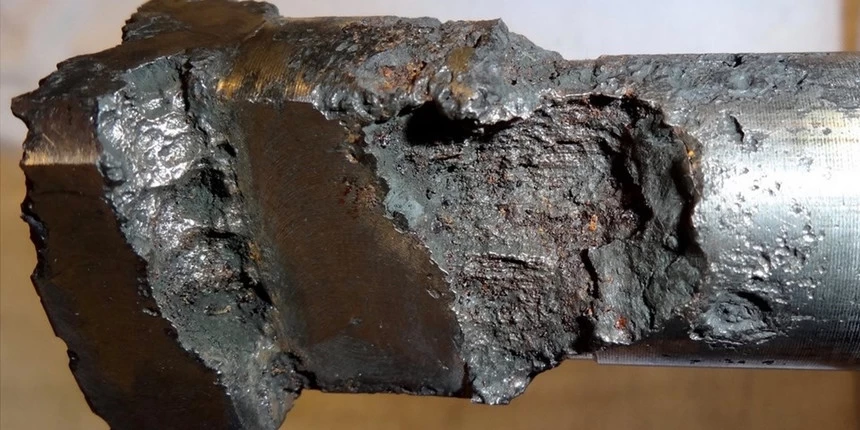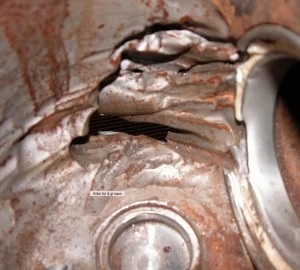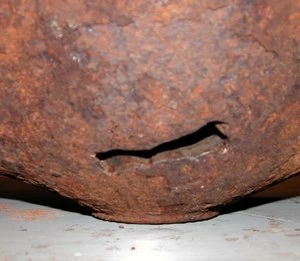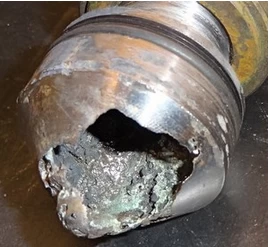Valves in severe service
2018-09-06 17:00:39

What is severe service? I think most would probably answer: sourservice, sandy service, high velocity or cryogenic, only to mention afew. And yes, those are examples of severe service, but couldlow-pressure water be severe service? My answer would be, “yes itcould.”
| I think any media could be considered “severe service” if the valve is not able to cope with it. For some people running a marathon is no problem, but for most it would be impossible without proper training and preparation for the event. Let’s put that analogy into the valve world context: If the valve is not prepared for the appropriate task, in my mind, it would be severe service for the valve. In one case, a rising stem ball valve class 900 was installed in produced water with some sand. The valve was working for years without problems under non-severe conditions. Then one day the valve was used as a throttling valve for some hours and came under high DP conditions. The result: take a look at fig. 1 the ball, fig. 2 the internal of the valve and fig. 3 the outside of the body. When throttling the valve, it came under extreme conditions due to the use, or better said, the abuse of the valve. This valve is fine for opening with DP or closing in flowing conditions, but it is a stretch to use it as a throttling valve with 80 bar DP with two-phase and some sand. This was a standard condition that turned severe, due to improper knowledge from the operator or the person ordering the operation. The result of this was a heavy external leak with oil and water and ultimately, a shutdown of the installation. Total cost: far too much, but without personal damage. Pressure Figure 4 is a conventional trunnion ball valve with soft seat insert. The valve was in gas service with a system pressure of 130 bar, material 316 and PTFE insert in the seat as illustrated. Nothing severe until the operator decided to open the valve with 100% DP, and as one can understand he did not fully open the valve at once due to down stream equipment. But as any good operator would do, he carefully opened the valve to pressure up on the down stream side; but again, a standard valve in a severe condition for that valve. One should be careful to open a soft-seated ball valve with DP and especially at 130 bar. There is a rule of thumb: you should not open a soft seated valve with a DP higher than 20 bar. In fact, 20 bar can be too much already if the valve is put into a 15% open position for several hours. A standard metal/metal-seated hard faced ball or gate valve should not be opened with a DP above 60 bar. Of course it depends on the media, the time used for throttling, etc., but again, this is my rule of thumb. Sour service Fig. 5 and 6 illustrate what normally is considered a sour service, but the situation should not give these results. The valve was a reverse operated solid slab with material 316 and Graphite + PTFE stem seal, the media was produced water. As the valve was normally in the open position (reverse operated) and, as we all know, in open position the stem stops in contact with the bonnet seat isolating the volume in the stem seal area. As the valve is in that position for months at a time, the media trapped above the stem/ bonnet seal goes sour and H2S is formed, attacking the stem. The bad guy here is the graphite: water and graphite are a bad combination. Again the media was in fact not severe, but it all did end up in a stem leak. In this case it was not one valve, but several. Heavy leak We could go on with hundreds of examples, but I will end with one more example: a standard globe valve (fig. 7) which should be used as regulating valve with a high DP. The high DP eroded the seats and resulted in a heavy leak. This valve was subsea and not easily replaceable, and nobody thought it was necessary to install a valve with a TC plug. After all it is much more expensive. Who is to say when the valve ends up in a severe condition? If ball valves are without lubrication fittings, one cannot clean the valve. This could lead to seats stuck in the seat pocket resulting in a leaky valve. Since there is no possibility for valve cleaning, this valve must be replaced. Let’s take a ball or gate valve, without lubrication fitting to the stem: normally this is fine, but when you do suffer a stem leak, you can´t inject a sealing component to seal off the valve (which would have solved the situation). Can’t train a valve As most readers of my columns probably know: I am all for maintenance of valves - this goes for valves in severe services too! Many tend to skip the fittings as it is a potential leak point, but without those fittings, no maintenance is possible. I do understand that in some cases, like a refinery with raw oil cooking at 560 degree Celsius, you don´t install fittings and add leak points as the media is self-igniting. You do not want an external leak. Back to the analogy of marathon running: you may train yourself to become a marathon runner or an ultra-marathon runner, but you can’t train a valve to become a severe |
 Fig.1  Fig.2  Fig.3  Fig.4  Fig.5  Fig.6  Fig.7 |
 +86 512 68781993
+86 512 68781993 


















